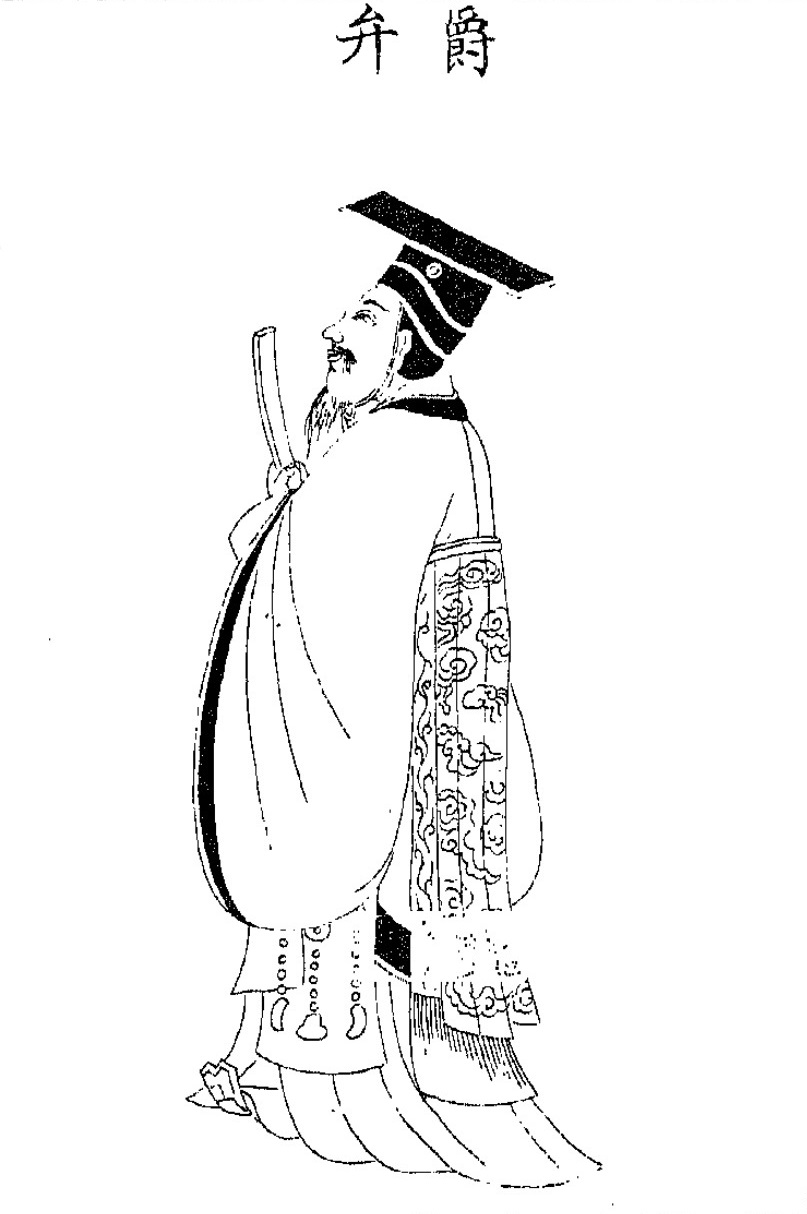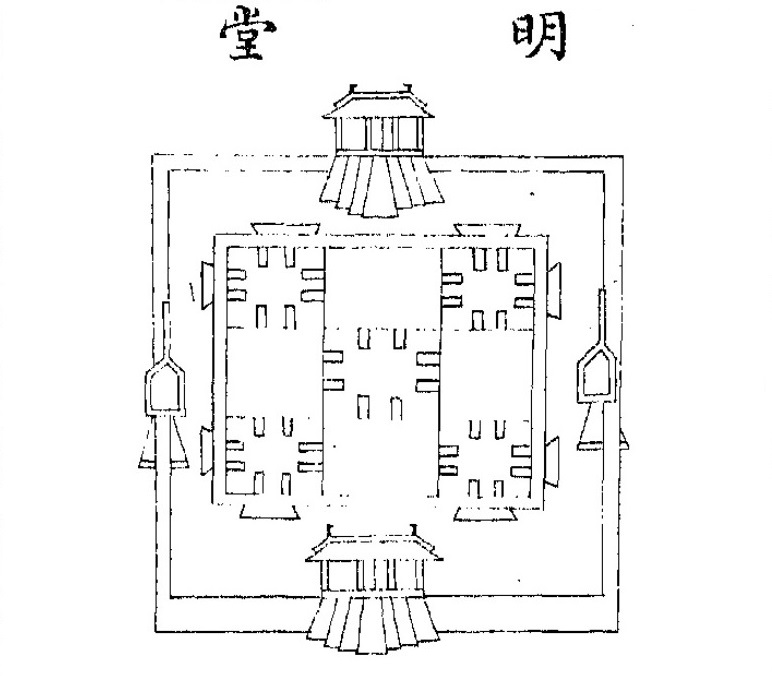Sanlitu jizhu 三禮圖集注 "Collected commentaries on the Illustrations to Three Ritual Classics" is a book on various Confucian rituals compiled by the scholar Nie Chongyi 聶崇義 (fl. 962). He believed that rituals were the essence of Confucian teaching and began compiling a book on rites that was based on earlier treatises on that topic, like Zhang Yi's 張鎰 (d. 783) fragmentarily surviving Zhangshi sanlitu 張氏三禮圖 from the Tang period 唐 (618-907). He compared these texts and revised them criticially, to use them for his own book of 20 juan, which was finished in 962, at the beginning of the Song period 宋 (960-1279). He presented it to the throne, with the result that Emperor Taizu 宋太祖 (r. 960-975) ordered the scholars Yin Zhuo 尹拙 (891-971) and Dou Yi 竇儀 (914-966) to revise and to publish it.
The Sanlitu jizhu explains the system of Confucian rituals described in the three Classics Liji 禮記, Zhouli 周禮 and Yili 儀禮, and illustrates them with drawings that make the arrangement of ritual objects, the positions and movements of persons, their clothing, buildings, shrines etc. easier to understand.
 |
Gunmian 衮冕 cap worn by the emperor during sacrificial ceremonies, Sanlitu jizhu, 1 (Siku quanshu edition). |
 |
Juebian 爵弁 "russet" cap worn by ordinary officials, Sanlitu jizhu, 1 (Siku quanshu edition). |
 |
The "Bright" Mingtang Hall 明堂, where official ceremonies are held Sanlitu jizhu, 4 (Siku quanshu edition). |
The earliest illustrated book on rites, Sanlitu 三禮圖, was compiled by the Later Han 後漢 (25-220 CE) scholar Ruan Zhan 阮湛 (2nd cent. CE). The only problem is that many descriptions in Nie Chongyi's book contradict the commentary of Zheng Xuan 鄭玄 (127-200), who for centuries was a highly admired expert, but at least Nie's collection of illustrations is very helpful to understand the meaning of many aspects, so that many later Confucians relied on his book as the "School of the ritual illustrations" (litu xuepai 禮圖學派).
Nie's Sanlitu jizhu is found in the series Siku quanshu 四庫全書, Sibu congkan sanbian 四部叢刊三編 and Tongzhitang jingjie 通志堂經解.